Challenge / reason for existance
- There is no truly fair and sustainable electronics on the world - at least not for something with reasonable processing power.
- Furthermore, the combination of Windows XP end of life and some graphics chipsets being badly supported in open source software, led to a practical obsolescence of a lot of laptops. E-waste is nearly worthless and an ecological problem.
The Scraptop
FairPhone (a company I'm not affiliated with, though which I do like much), did quite a good start on fair electronics with their phone. In this project I build on that by trying to convert a laptop named in (2) to something like the Superbook.
Buying a Superbook is no challenge. Creating something similar from - mostly - scrap is what makes this project unique and challenging. This leads, hopefully, to less trash, and re-use of something that beforehand could be considered trash. For me personally, finishing this project to a certain extent (which means, it needs to be usable enough), would mean freeing another 'good' laptop I currently have, for someone else to use (so less waste).
Dreams...
I hope this project would make it possible to reuse (upcycle) a lot of scrap laptops, while in the mean time making it unneccesary to produce a lot of new electronics and plastic cases. Furthermore, it aims to get the fully 'fair laptop' one step closer.
The final dream is a single or multi PCB conversion kit (see: thoughts on the fairness) for at least one type of laptop, that does the following:
- Input using USB-OTG and/or FairPhone2 USB feature connector
- Connects to the existing keyboard using a microcontroller
- Connects to the existing TFT using a DisplayLink driver IC
- Has some advanced battery logic (perhaps to re-use existing Li-ion batteries, or just powered by the net)
This project's scope
- Chain of USB OTG hub -> ATmega8 USB keyboard driver + USB Displaylink to DVI -> DVI to LVDS -> TFT
- All fitted in the old laptop
Some thoughts on the fairness
What could make this laptop 'fair-ish', even when produced on a somewhat large scale.
- Laptops that are economically lost can now be reused
- The kit can be modular and re-use stuff that people have lying around. It's not important what type of USB OTG adapter or USB hub is used. Any power bank can be used as a power source. No new materials = no new climate/worker condition/... impact.
What would make it unfair?
- All electronics have some dubious history, and this doesn't change when they're second hand.
- The hardest part would be the LVDS display driver. A custom DisplayLink PCB could solve this - but I don't think I can do this - never did PCB design before.
- If it becomes a 'wanna-have' that gets being built and then put into a drawer. That would mean new materials but no added value. And that risk has mine too...
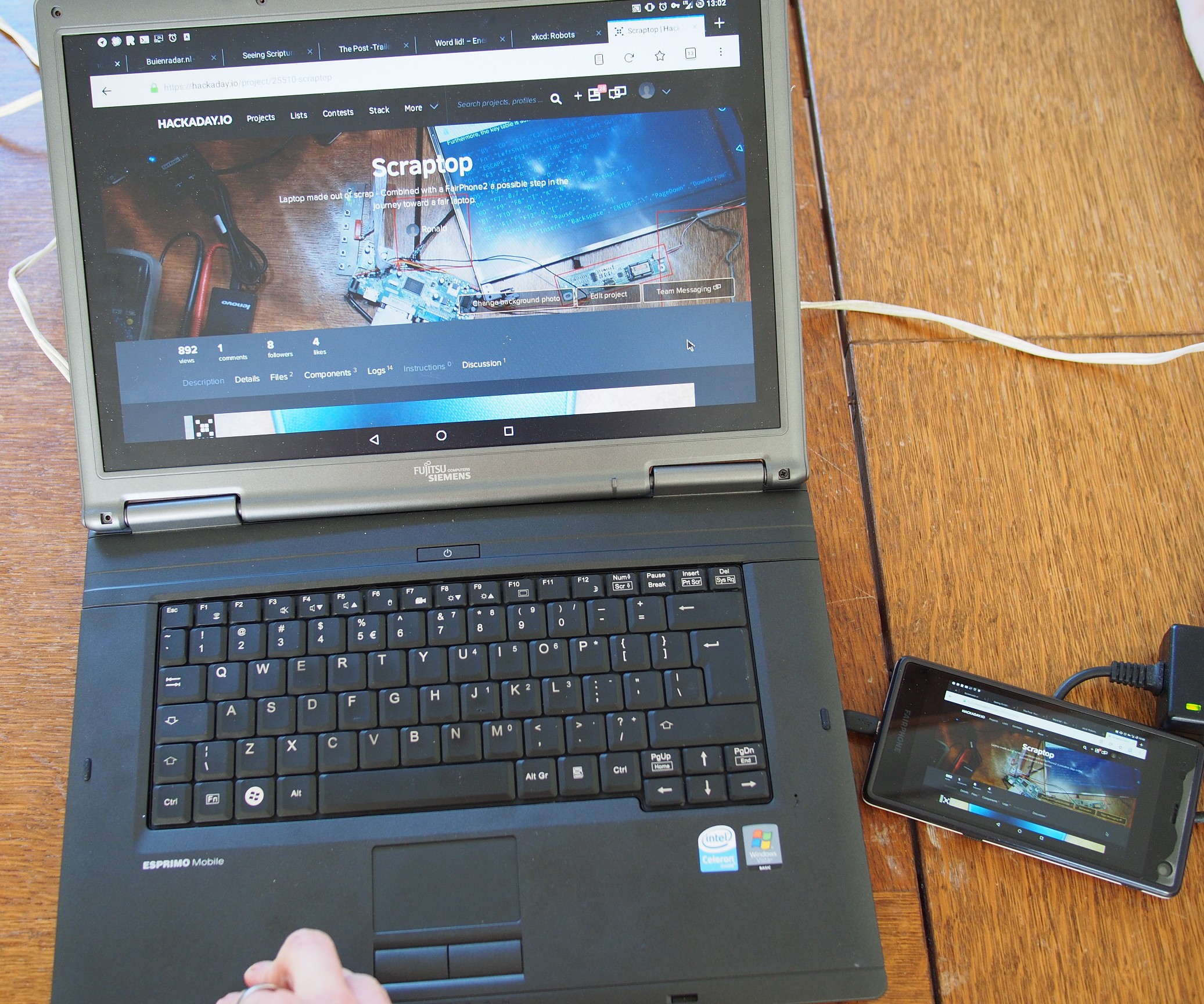
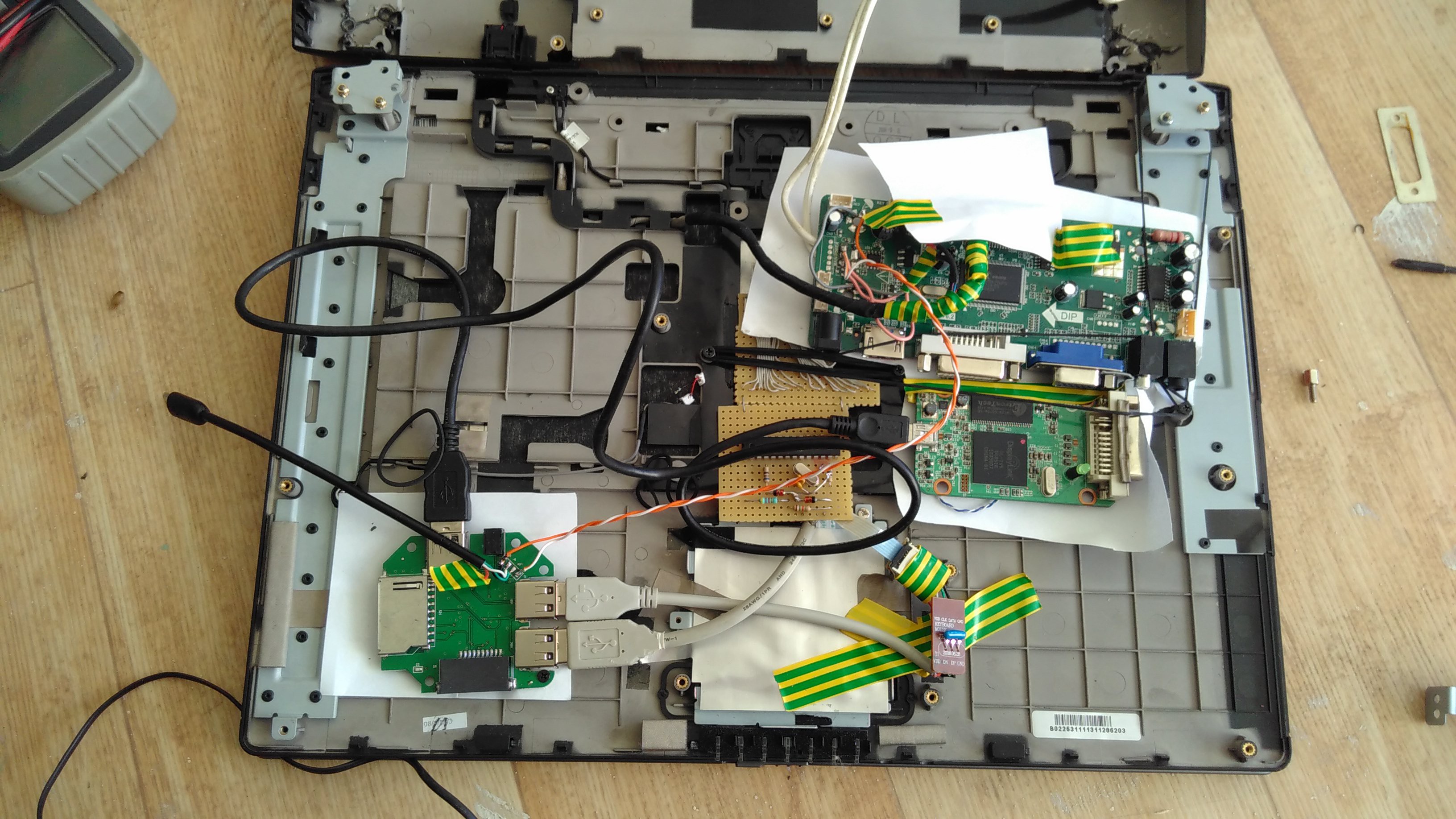

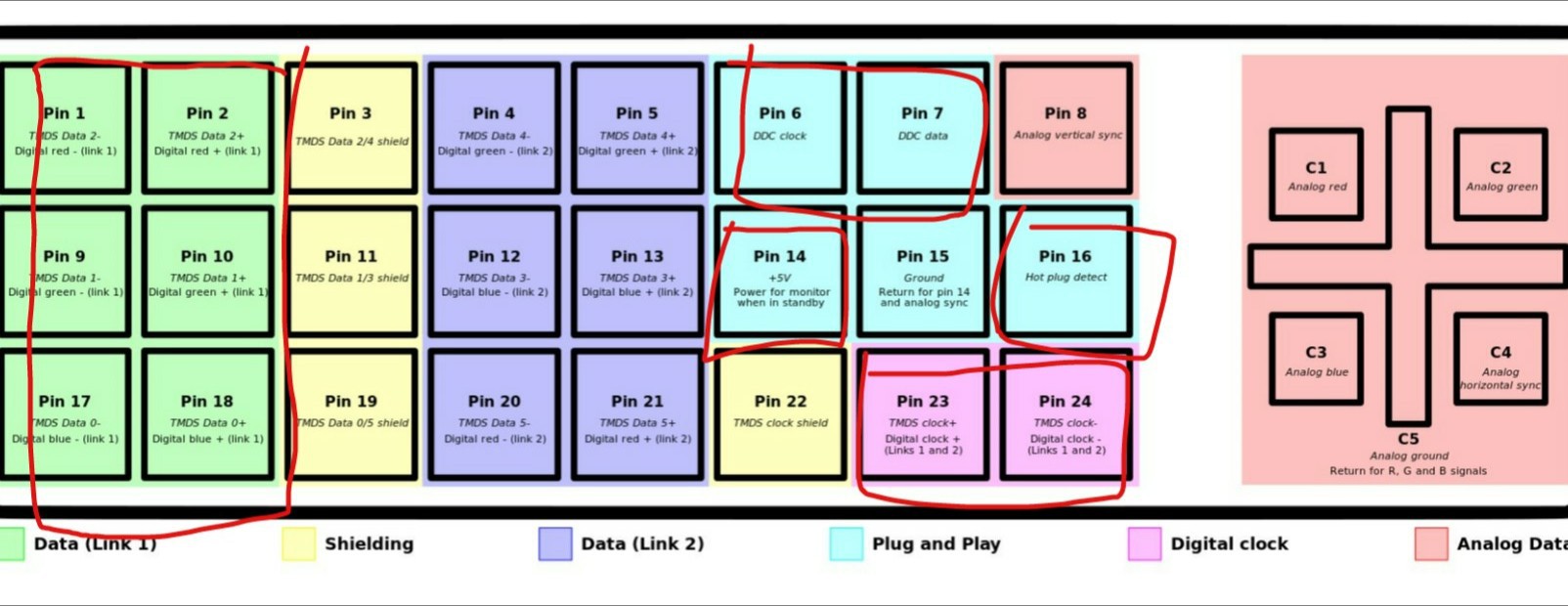
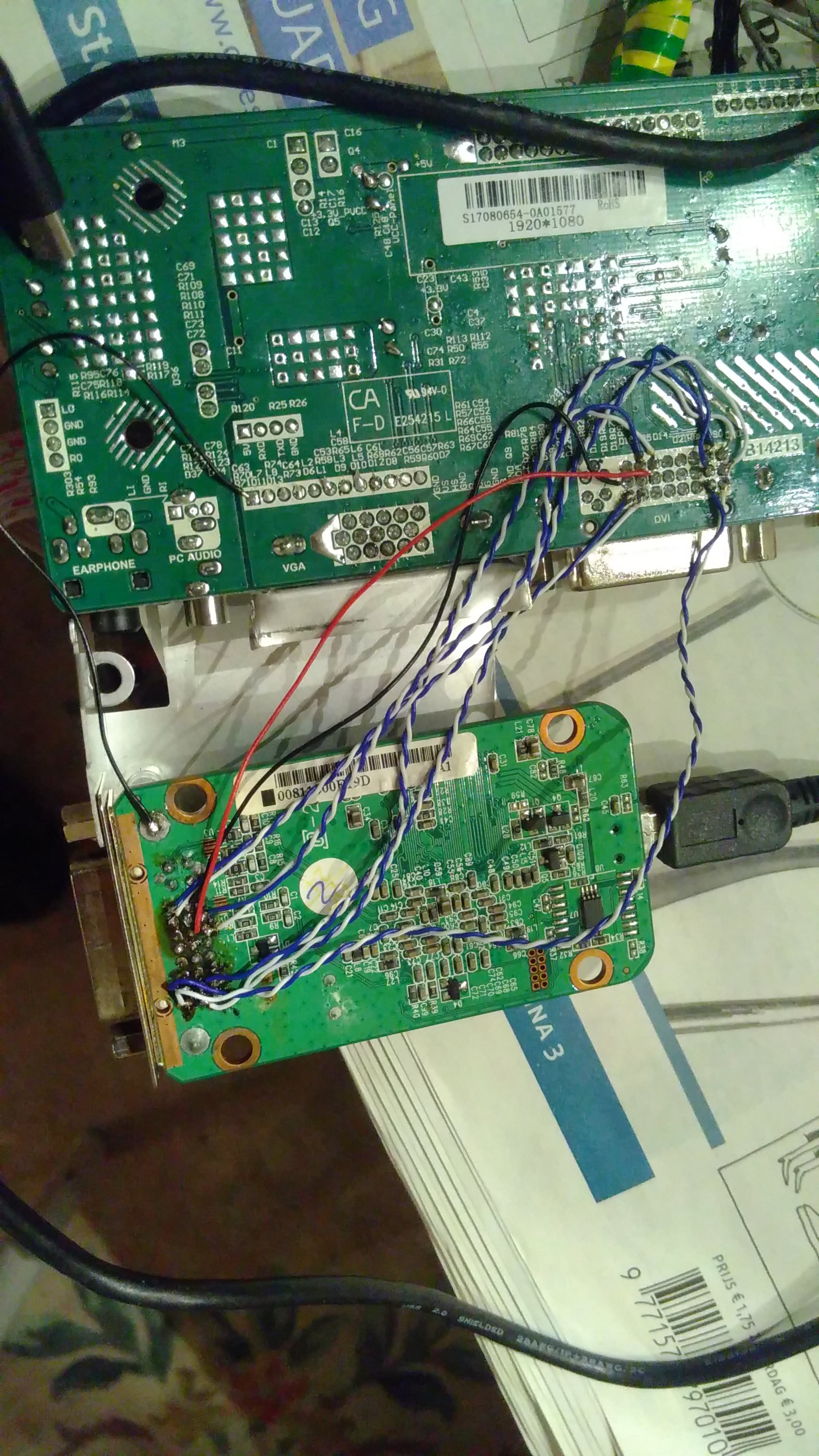 It works! With only 13 wires. I knew the DDC cables were correct because I had used them for VGA, but still it was a surprise that I didn't make a mistake. :)
It works! With only 13 wires. I knew the DDC cables were correct because I had used them for VGA, but still it was a surprise that I didn't make a mistake. :)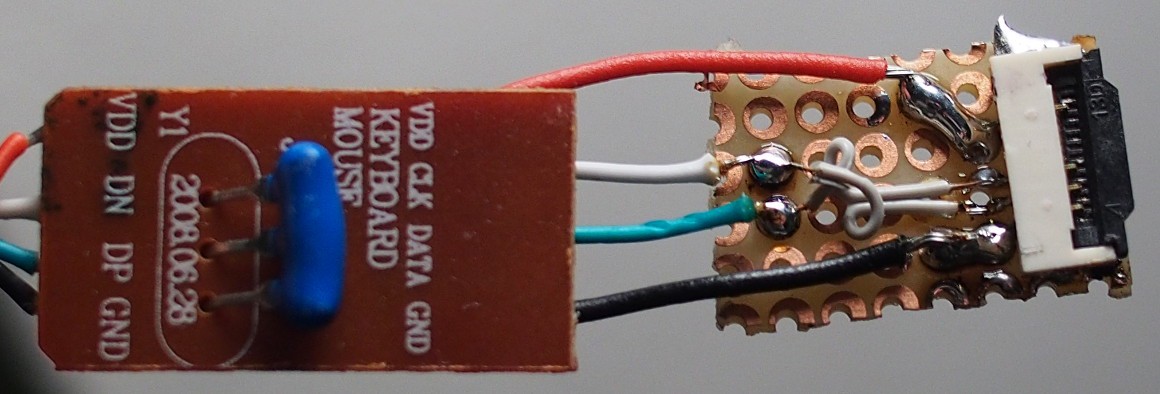
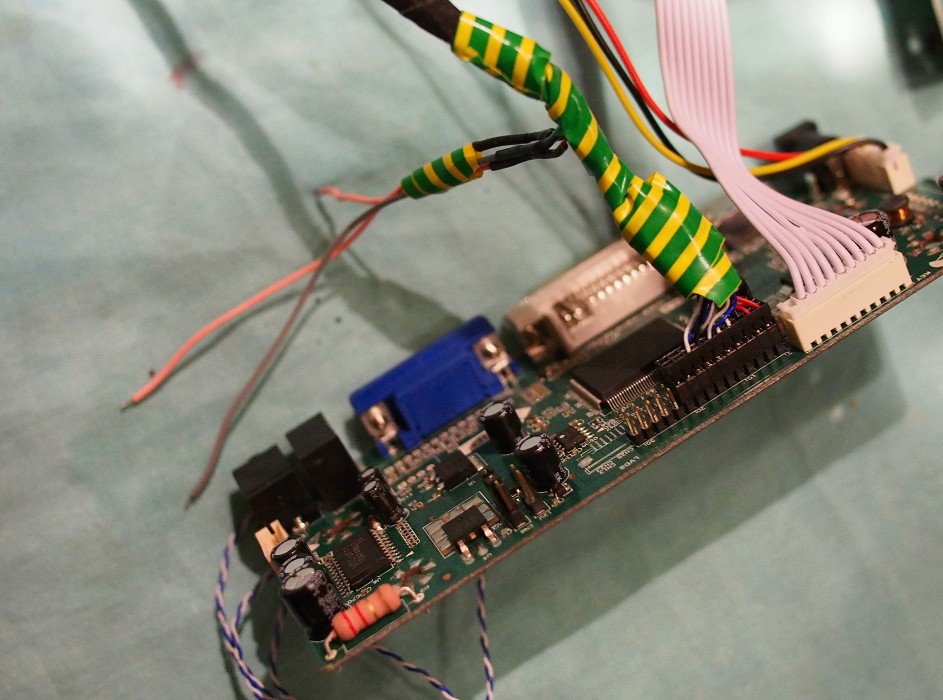

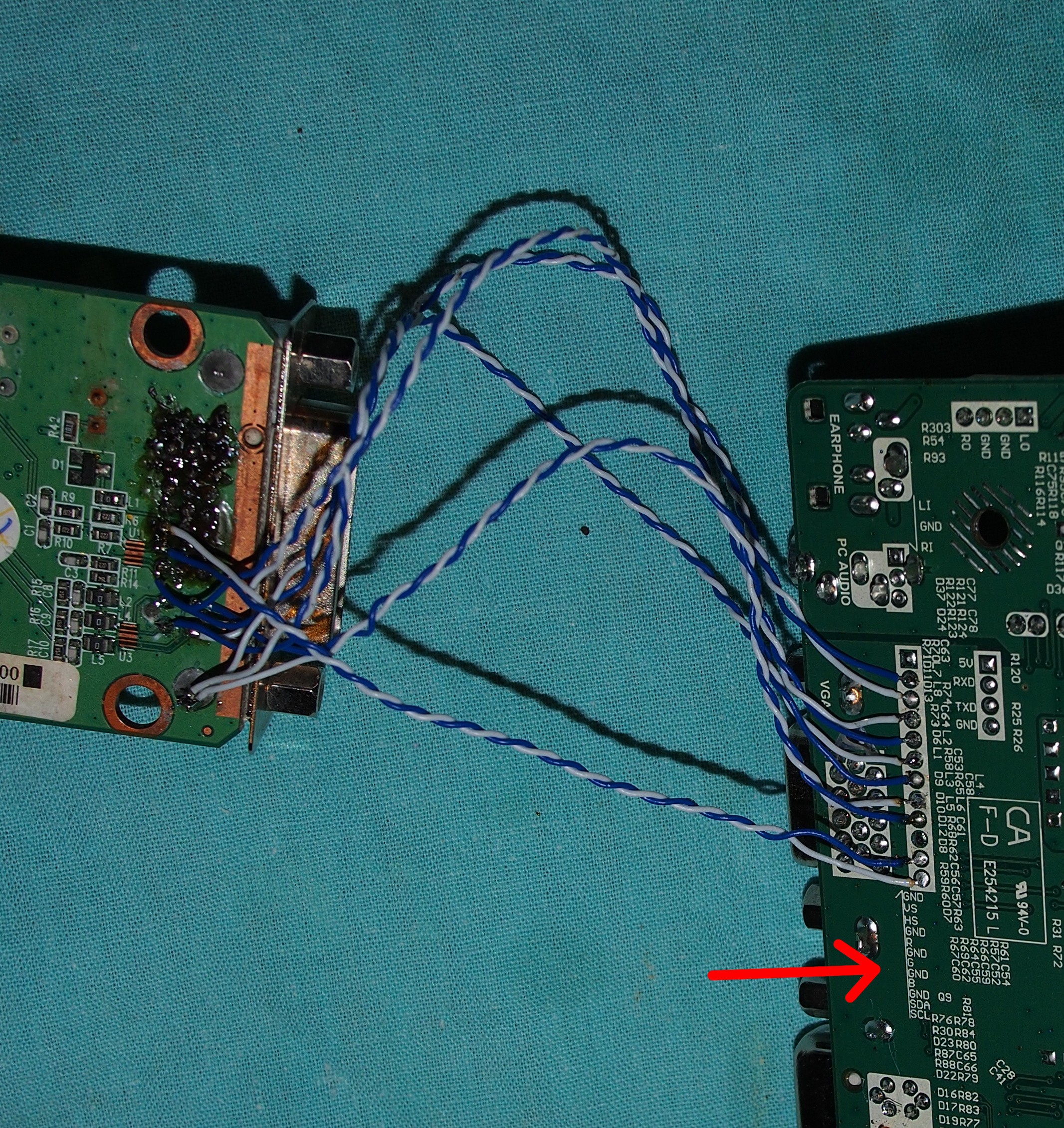
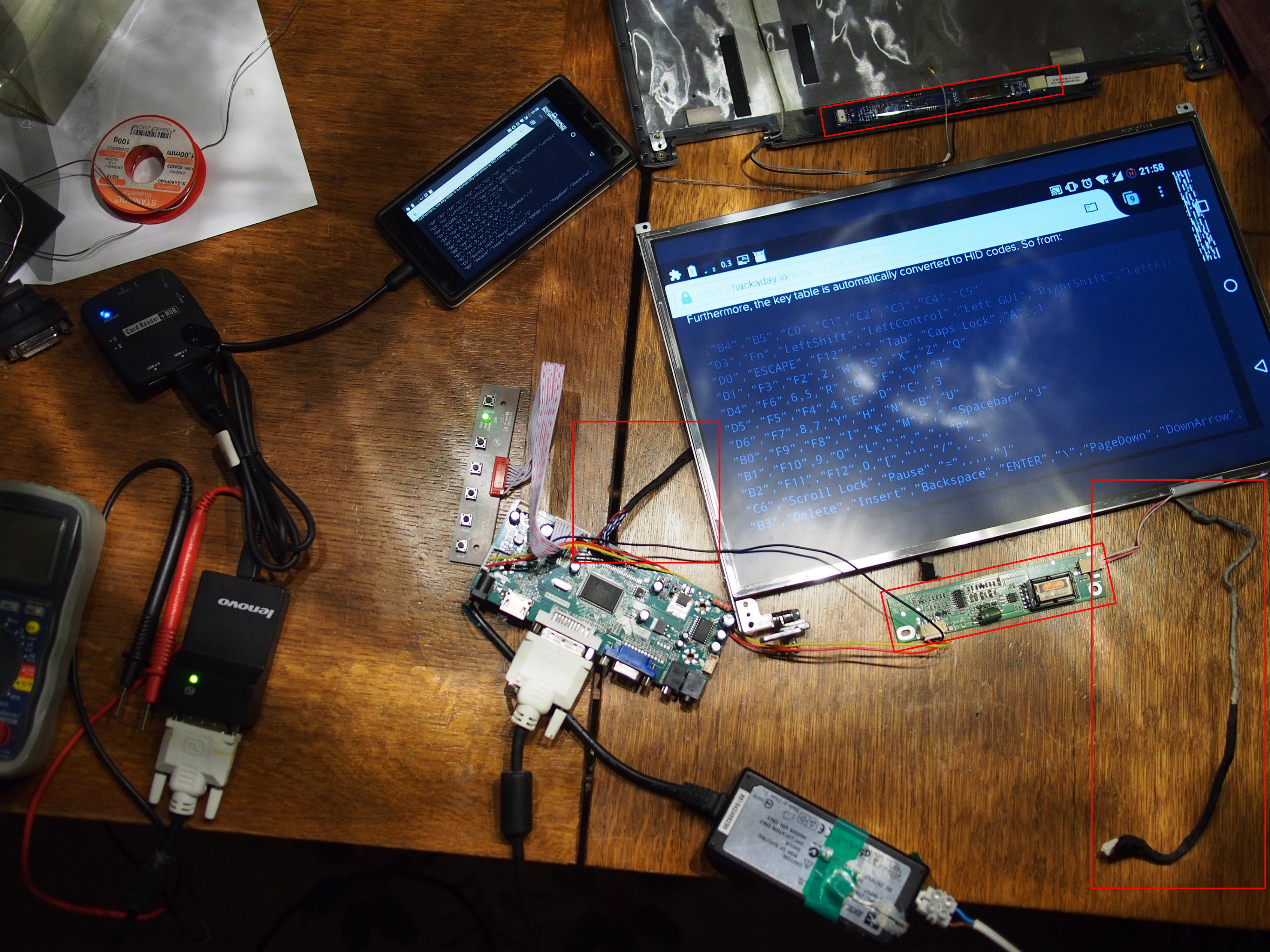
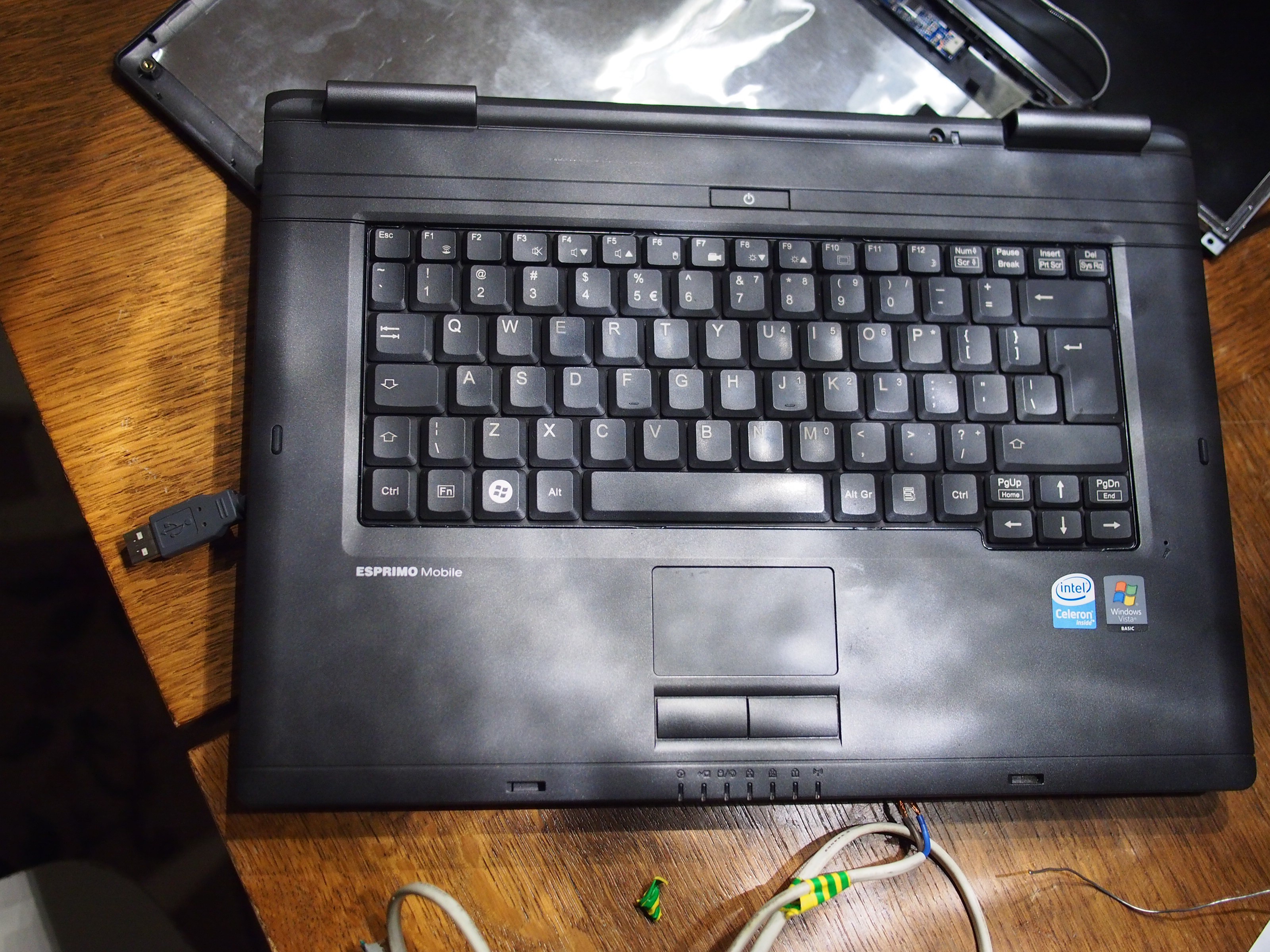 And there's quite some space left: at the left bottom there used to be a hard drive, above that there was the DVD writer, and then the main board at the right half. I'd like to be able to shove in my phone somewhere (perhaps the DVD location) and also still have the option to use the old battery. And stuff in the power adapter. Looking at the PCBs it might just, or might just not be doable.
And there's quite some space left: at the left bottom there used to be a hard drive, above that there was the DVD writer, and then the main board at the right half. I'd like to be able to shove in my phone somewhere (perhaps the DVD location) and also still have the option to use the old battery. And stuff in the power adapter. Looking at the PCBs it might just, or might just not be doable.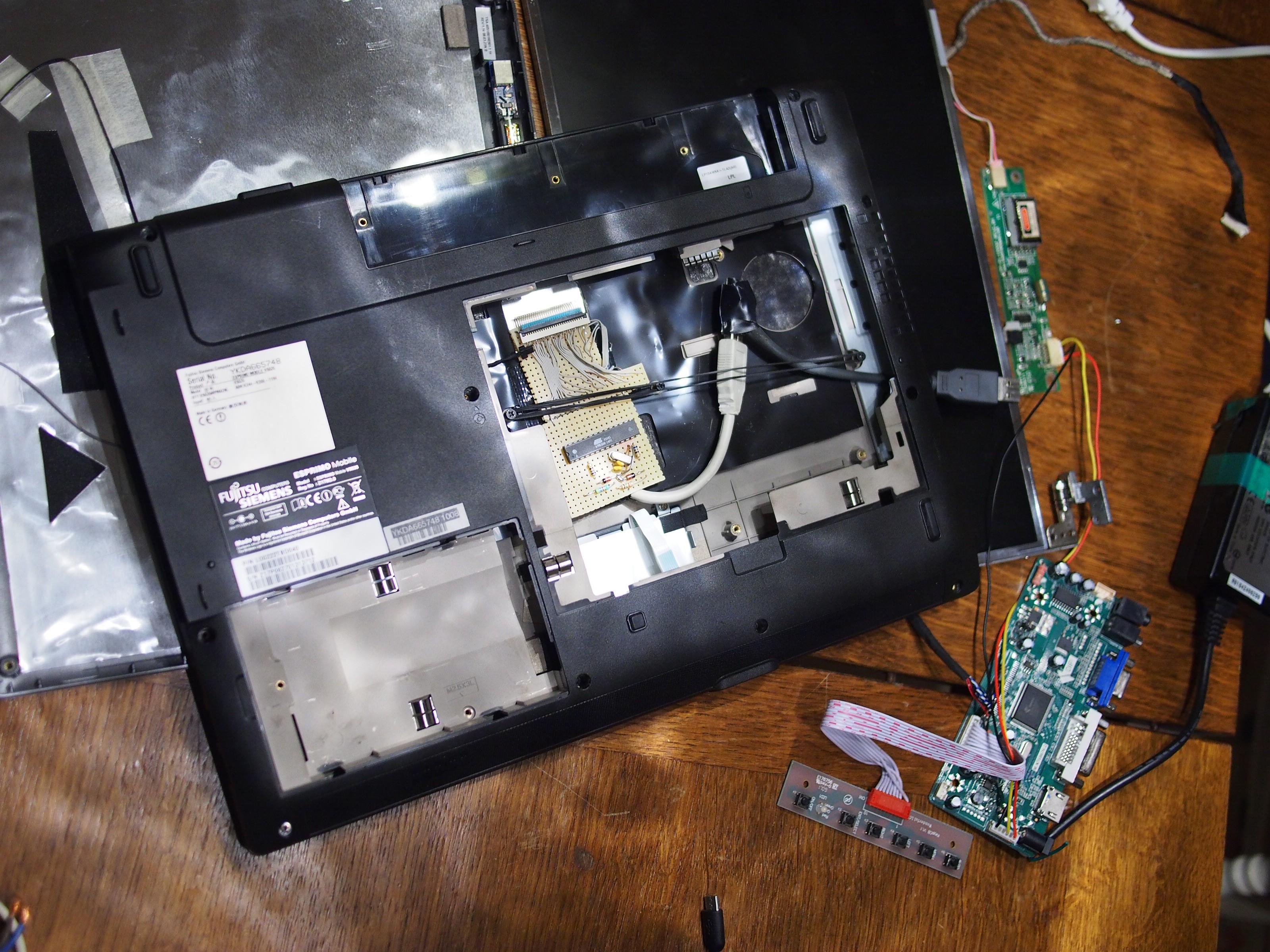



OMG I LOVE YOU.
This is everything that my "Anytop" idea was supposed to be, and maybe a bit more... WAY COOL DUDE!